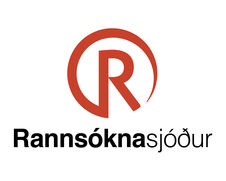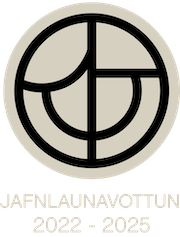Tilkoma og þróun frumsaminna riddarasagna í ljósi ævintýra (exempla)/ - verkefni lokið
Fréttatilkynning verkefnisstjóra
Markmið verkefnisins var að skoða tilkomu og þróun frumsaminna riddarasagna í ljósi miðaldaævintýra (dæmisögur, exempla). Sérstök áhersla var lögð á Clári sögu keisarasonar, sem jafnan hefur verið talin
til riddarasagna, ýmist þýddra eða frumsaminna.
Elsta handritið sem varðveitir söguna
(Kaupmannahöfn, Arnamagnæanske samling, AM 657 a–b 4to, um 1350) inniheldur miðaldaævintýri, jarteinasögur, stuttar sögur af dýrlingum (legenda) en einnig heilagra manna söguna Michaels sögu höfuðengils. Af elsta handritasamhengi sögunnar, sem og eftirmála hennar, má þykja ljóst að sagan var upphaflega hugsuð sem dæmisaga og mætti því telja hana til miðaldaævintýra. Nokkrum áratugum seinna birtist sagan í öðru handriti (Stokkhólmur, Konunglega bókasafnið, Isl. Perg. 4to 6, um 1400) þá með þýddum og frumsömdum riddarasögum. Breytt handritasamhengi sögunnar bendir til breyttrar túlkunar og notkunar. Sagan er nú ekki lengur notuð sem dæmisaga í kirkjulegu samhengi heldur sem skemmtisaga og/eða dæmisaga í veraldlegu samhengi. Þessar niðurstöður undirstrika mikilvægi þess að hugsa ekki um bókmenntakerfi miðalda, og þá sérstaklega bókmenntagreinar, sem óbreytanlegan fasta heldur sem virkt kerfi í símótun. Stór þáttur rannsóknarinnar var samanburður Clári sögu við þýska sögu frá 13. öld, Die halbe Birne eftir Konrad von Würzburg, og ítalska sögu frá 16. öld, Bianca di Tolosa eftir Luigi Alamanni, en báðar tilheyra sögurnar sagnagerðinni ATU 900. Clári saga hefur lengi verið talin til svokallaðra meykóngasagna og hefur jafnvel verið talið að með henni hafi ofbeldi meykóngsins gagnvart biðli sínum verið flutt inn í íslenska sagnahefð. Samanburðurinn leiddi í ljós að ekki sé grundvöllur fyrir þeirri fullyrðingu heldur virðist þvert á móti sem Clári saga hafi verið aðlöguð að íslensku bókmenntakerfi þar sem ofbeldisfullar konur voru nú þegar þekktar. Þessi þáttur rannsóknarinnar bætir ekki aðeins þekkingu okkar á tilkomu meykóngasagna heldur einnig á íslenskum miðaldaþýðingum.
English:
The project’s aim was to examine the emergence and development of indigenous Icelandic
riddarasögur (chivalric sagas) in light of exempla. Particular focus was on Clári saga keisarasonar, but this saga has generally been counted among the chivalric sagas, either translated or indigenous. The oldest manuscript containing the saga (Copenhagen, Arnamagnæanske samling, AM 657 a–b 4to, ca. 1350) contains various exempla, miracles, and legends, as well as the longer Michaels saga höfuðengils. From this earliest manuscript context, and the saga’s epilogue, it is clear that the saga was originally written as an exemplum, a parable of good behaviour. A few decades later, the saga appears in another manuscript (Stockholm, Kungliga biblioteket, Isl. Perg. 4to 6, ca. 1400), but this time alongside translated and indigenous chivalric sagas. The changing manuscript context points to a change in interpretation and use. The saga is no longer used as an exemplum in a religious context, but rather as an entertaining saga and/or a parable in secular context. These results emphasize the importance of not viewing the medieval literary system, in particular genre boundaries, as a constant but rather as an ever-evolving fluid system. A large aspect of the project was a comparison of Clári saga with the German 13th-century Die halbe Birne by Konrad von Würzburg and the Italian 16th-century Bianca di Tolosa by Luigi Alamanni, but both texts belong to the international tale type ATU 900. Clári saga has long been regarded as one of the maiden-king sagas and it has even been argued that it was with the saga’s import that the motif of the maiden king’s violence against her suitor was introduced into the maiden-king sagas. The comparison revealed that this argument can be rejected. Rather, it seems that Clári saga was adapted to a literary system that already contained the motif of a violent woman. This aspect of the study not only betters our understanding of the maiden-king sagas, but also on translations in medieval Iceland.
∙ Information on how the results will be applied
The results of the project will provide an important step in the research of indigenous riddarasögur, particularly the subgroup meykóngasögur. The results show that Clári saga did not supply Icelandic authors with the motif of the meykóngur’s violence against her suitor, but this will influence further research on this group of sagas. The results also make clear that although the exempla did not directly supply riddarasögur with motifs, they cannot be ignored when studying the emergence of riddarasögur. Any future study of the sagas’ background must include the exempla along with other genres. The results of the study of the manuscript AM 657 a–b 4to are a valuable addition to the study of medieval Icelandic manuscripts. This manuscript is a part of a group of 15 manuscripts that were written by a group of three scribes that have often been connected with the Þingeyrar monastery. I intend in a future project to build upon the results of the current project and undertake a study of all of the 15 manuscripts, their scribes and mise-en-page.
∙ A list of the project’s outputs
Thesis
PhD thesis to be submitted spring of 2023.
Articles
2021 ‘Clári saga and its Continental Siblings: A Comparative Literary Approach to an Old
Problem.’ Dominican Resonances in Medieval Iceland: The Legacy of Bishop Jón
Halldórsson of Skálholt, eds. Gunnar Harðarson and Karl Gunnar Johansson. Leiden:
Brill. https://doi.org/10.1163/9789004465510_007
2019 ‘Netflix miðalda – AM 589 a–f 4to,’ Stofnun Árna Magnússonar í íslenskum fræðum,
13. maí 2019. https://www.arnastofnun.is/is/utgafa-og-gagnasofn/pistlar/netflixmidalda-am-589-f-4to
2018 ‘Formáli Clári sögu — eða — að vera eða vera ekki ritklif.’ Gott skálkaskjól, eds.
Guðvarður Már Gunnlaugsson og Annette Lassen. Reykjavík: Menningar- og
minningarsjóður Mette Magnussen, pp. 88–88.
https://www.academia.edu/36595858/Formáli_Clári_sögu_eða_að_vera_eða_vera_
ekki_ritklif
Presentations and Posters
2022 Afmælismálþing Margaret Cormack, University of Iceland. ‘“Þessa bók á Þuríður
Þorleifsdóttir, því hún hefur erft hana eftir föður sinn”: Eigendasaga AM 657 a–b 4to.’
2022 AMS Lunch Lecture, NorS, University of Copenhagen. ‘A Planned New Edition of Clári
saga: Some Methodological Questions.’
2019 Hugvísindaþing, University of Iceland. ‘Með blíðu eða stríðu: dyngjan í ATU 900
sögum.’
2018 Vísindavaka Rannís, Reykjavík. ‘Dæmisaga verður að riddarasögu: Viðtökusaga Klári
sögu.’ Poster Presentation at Vísindavaka Rannís.
2017 AMS forskermøde, NorS, University of Copenhagen. ‘From ævintýr to riddarasaga: The
Generic Evolution of Clári saga.’
2017 Hugvísindaþing, University of Iceland. ‘Jón Halldórsson, miðaldaævintýri og
frumsamdar riddarasögur.’
Heiti verkefnis: Tilkoma
og þróun frumsaminna riddarasagna í ljósi ævintýra (exempla)/ The Emergence and
Development of Indigenous Riddarasögur: The Case of Exempla
Verkefnisstjóri: Védís Ragnheiðardóttir, Háskóla Íslands
Tegund styrks: Doktorsnemastyrkur
Styrktímabil: 2017-2019
Fjárhæð styrks kr. 18.743.000
Tilvísunarnúmer Rannís: 173811


